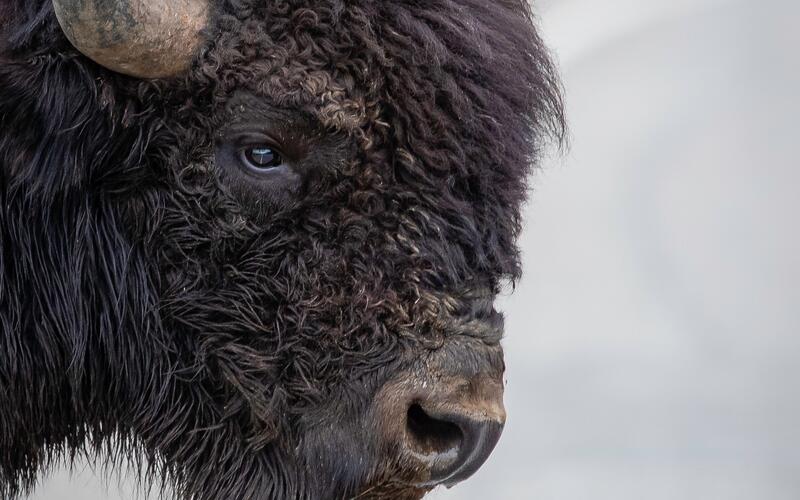The “Hooves on the Ground” Approach to Bison Conservation

The "Hooves on the Ground” Approach to Bison Conservation
Bison expert Jeff Martin wears many hats: geologist, rancher, paleontologist, ecologist, and research director. Using his impressive background, he’s taking a “hooves on the ground” approach to bison conservation to restore herds throughout North America.
Dr. Jeff Martin’s bison journey began on the ranch he grew up on in west central Wisconsin. His family purchased their first herd in 2001 after years of interest in the charismatic North American grazer. It was a small-scale operation, a family ranch. But he did not always plan to become an expert in bison research. “My mom still has some of my grade school assignments that ask, ‘What do you want to be when you grow up?’ I’m going to be a geologist,” he recalls.
Jeff left the bison ranch to attend college at the South Dakota School of Mines & Technology, intending to fulfill his childhood ambitions in geology. While there, he decided to make some extra cash as a ranch hand. He got a job at one of the largest bison operations in the country, the 777 Ranch in South Dakota. Reflecting on the experience, Jeff says, “Small bison ranches versus large bison ranches are operated and run in completely different ways. I did learn the breadth of scale of how you could do bison ranching right.”
After college, Jeff moved on to graduate school to study paleontology, specifically the ancient, now-extinct species of bison that roamed North America eons ago and gave rise to bison we see today. The fossil record shows bison adapted through the ice ages. This process continues today as modern bison adapt to a changing climate. To cap off his outstanding bison-focused resume, Jeff received a Ph.D. in Wildlife Science from Texas A&M University in 2020.
Today, Jeff is the Director of Research at the Center of Excellence for Bison Studies (BisonCOE) at South Dakota State University, the world’s only research program explicitly focused on bison. “The main goal of my research and Extension program is to identify the drivers and consequences of body size change in bison,” he says. “How have these animals been adapting over the last millennia and several millennia? And how may that progress in the future with climate as a primary driver?”
In addition to biology, Jeff’s research addresses the role of economics and markets in bison conservation and restoration. Consumers are beginning to demand products that contribute to a healthier planet. Bison have exciting potential to meet this demand and contribute to sustainable food systems in North America. South Dakota State recently received an $80 million Climate Smart Commodities Initiative Grant from the U.S. Department of Agriculture. This grant will help Jeff and his research team identify, verify, and promote bison meat as a product that helps mitigate climate change, boost biodiversity, and support grassland ecosystem function.
The bison management landscape is varied and diverse. It includes private livestock herds, publicly held wildlife herds, environmental non-profit conservation herds, and cultural herds stewarded by Indigenous peoples. Jeff’s applied research helps bison managers make the best decisions for their herds. In 2021, Jeff coined the term “Bison Management System” to describe how these different sectors interact. “Bison are the only species on the planet managed in all these different sectors,” he says. “Bison management blends wildlife conservation and livestock production.”
Supporting and advancing research on the Bison Management System will enrich ecosystems and livelihoods across North America. Jeff and his team at the Bison COE are at the forefront of bison repopulation research. Restoring herds of bison will build food sovereignty on Native American reservations, help native plant and animal species flourish, and create a resilient grazing regime in the face of climate change. But there is still plenty of work to be done—bison currently only occupy less than 1 percent of their historical range.
Despite this fact, Jeff is confident that the future of bison in North America is bright: “Bison are creating a conservation pathway for themselves as they did over 100 years ago to spur the conservation movement with President Theodore Roosevelt. It’s that charisma that follows their truly impressive and almost menacing size. You can literally feel the ground shake when you’re near them as they walk.”




